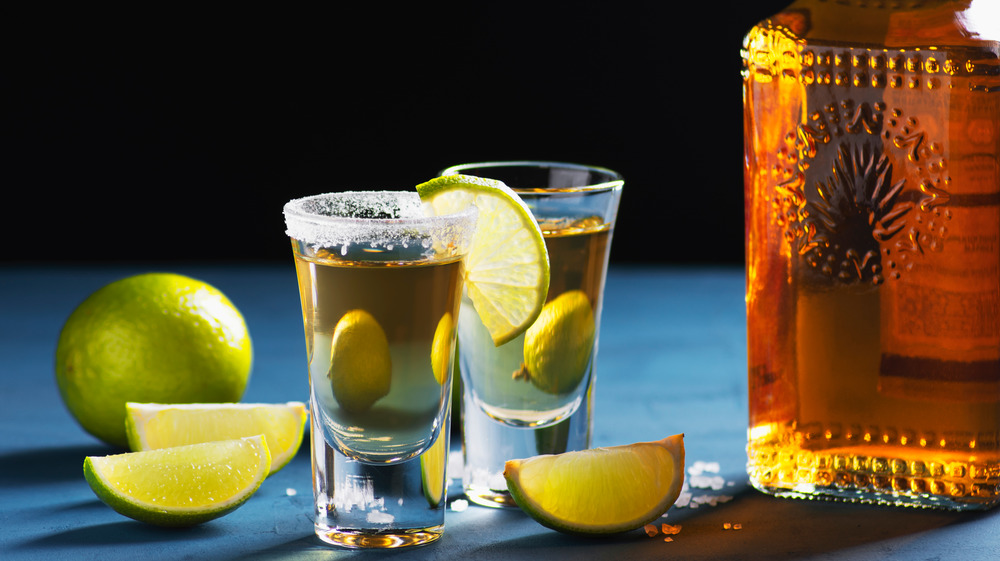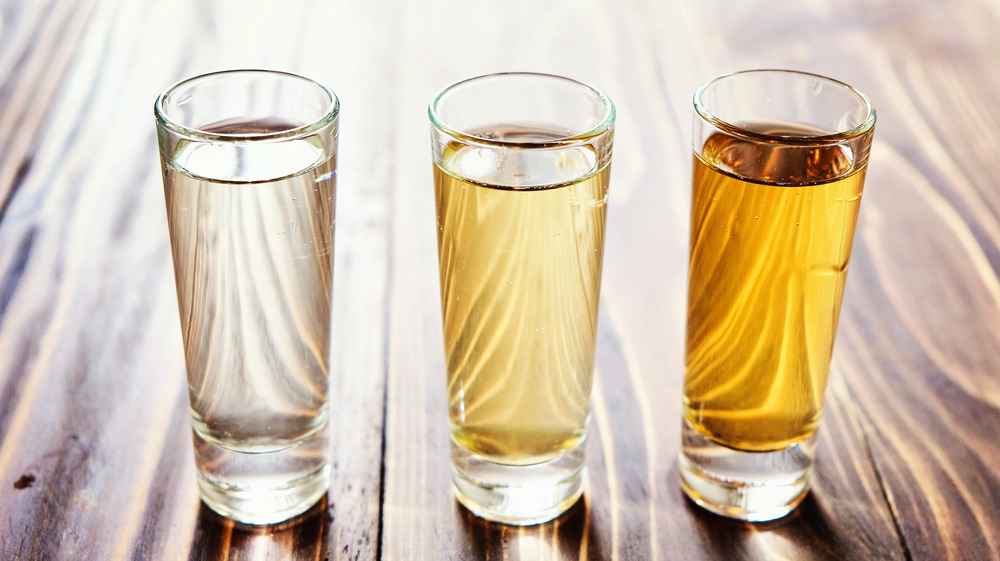The Real Meaning Behind The Different Tequila Types
Everyone has probably at least heard of tequila. Whether you've sipped on a margarita or been coaxed into one-too-many shots at the bar, odds are you've tried it, too. If you've purchased tequila, you may have noticed — or even been confused by — the different categories that distinguish the bottles. The extremely popular spirit comes in multiple forms, according to VinePair, but what do those distinctions really mean?
First off, to meet all the qualifications of the official tequila title, the spirit must be made in the Mexican states of Jalisco, Michoacán, Guanajuato, Nayarit, or Tamaulipas, according to Wine Enthusiast. True tequila must also be made entirely from the blue agave plant, and has to garner approval from Mexico's Tequila's Regulatory Council, the Consejo Regulador del Tequila. Under that certified title of tequila, VinePair states there are essentially five popular categories the spirit can fall into, all with distinct tasting notes and production processes.
Types of tequila, explained
Thrillist breaks down tequila blanco, which you may have also seen under the names white, silver, or plata. Blanco retains its clear color by skipping a barrel aging process. This allows the pure flavor of the blue agave to shine through, resulting in a sharp, "fiery" flavor.
Joven Tequila (joven meaning young in Spanish, according to the Collins Dictionary) is a blend of tequila blanco and color, glycerin, or another form of tequila, says VinePair, and can be difficult to come by. Thrillist likens this style to a blended scotch, thanks to the mixing of multiple tequilas, and suggests stirring it up in a cocktail.
To earn the label Reposado, tequila has to age in oak barrels for at least two months and up to a year, (via VinePair). The aging rounds out the spirit, leaving tequila Reposado with a smoother finish without eliminating the notes young agave juice offers, explains Thrillist.
Añejo sits in the middle of the tequila-aging timeline, Wine Enthusiast states, as it spends a minimum of one year in an oak barrel, but under three. The longer aging dulls the sometimes harsh bite of younger tequilas, replacing the flavor with a more caramelized finish, according to Thrillist.
Extra Añejo, as you may guess by the name, is ultra-aged, ultra-smooth tequila that spends at least three years in a barrel, notes Thrillist. This style is the new-tequila-on-the block, with Wine Enthusiast sharing the category wasn't established until 2006.
Now that you know the difference, you'll never be confused while shopping for tequila again!

